Dear Artist,
Heuristic (pronounced hyu-RIS-tik) comes from the Greek heuriskein meaning “to discover.” The heuristic process means achieving some desired result by intelligent guesswork rather than by systematic formula. Generally used in the fields of invention, computer science, psychology and law, examples of its use would be “seat of the pants,” and “trial and error.” Heuristic thinking generally results in reasonably close solutions. The benefits are speed and expediency.
The daily act of creating art is full of it. Here’s an example: To choose the colour and tone value of the light part of the sky, the colour chosen can be seen as correct only when the rest of the colours around it are applied. Thus, when applying a sky early on, an artist must make a heuristic decision to commit to an approximate sky colour. The artist then has the choice of leaving it and remaining true to the first guess, or modifying it, perhaps many times. Heuristics can apply when artists are looking for both realistic and imaginary truth.
Some media, such as oil or watercolour, require a deadly eye and knowledgeable commitment. “Forgiving” media such as acrylic and pastel are modified more readily. Here are a few ideas for squeezing value from heuristics in any media:
Start anywhere.
Accept “nearly right” in order to get going.
Forgo early accuracy and precision.
Let early strokes determine later ones.
Assume a solution and try working backwards.
Of two solutions, choose the simplest.
Move forward on incomplete information.
Think smart rather than laborious.
Use intuition to go directly to the outcome.
Trust your instincts.
One needs a sense of discovery and a willingness to go with the educated guess, without falling too much into tried-and-true habit. In other fields the conventional wisdom is sometimes referred to as “bias.” Heuristic painters rethink their systems to free up natural flow and avoid bias. Artists who find themselves stuck, bogged down or habitually obsessive might consider giving some of these ideas a spin. It’s not that perfection is left behind, but rather a new kind of perfection is found.
Best regards,
Robert
PS: “Truth is ever to be found in simplicity.” (Isaac Newton)
Esoterica: Most of us who apply ourselves at an easel or other workstation automatically become curious about the nature of the daily mystery before us. It seems the blank canvas transforms as a result of both laws and whims. To become unique and fulfilled, we need to work with our whims. Heuristic theory invites a more relaxed “to the point” work habit that is courageous and potentially richer. I’ve noticed a positive change in students’ work when they commit to experimentation. When life and art are understood as a beautiful exercise, great things happen.
This letter was originally published as “Heuristic painting” on May 9, 2008.
Have you considered a Premium Artist Listing? With each letter, an artist is featured at the bottom of this page. The Premium Artist Listings are a means of connecting artist subscribers through their work. Proceeds from each listing contribute to the production of The Painter’s Keys.
“More of me comes out when I improvise.” (Edward Hopper)
Featured Workshop
October 17 – 23, 2022
San Miguel de Allende
Painting Mentor – Amit Janco: Artist, Author, Labyrinth Designer, Founder of Heartshops and Retreat on Your Feet (Creativity and Walking Retreats)
Join this 7-day journey through self-expression to unleash your bottled-up creativity, with a brush in hand – and openness in your heart. Calling non-artists too! Each day, you’ll stand up to paint; yes, you’ll be painting on your feet, and moving about – thereby activating the brain, the body and ALL senses. No need to come with a plan; watch the colors and brushstrokes come alive; and see the magic and mysteries unfold, as you greet your square of paper anew, every day. Our accommodations and studio are in an enchanting former bordello, just a stone’s throw away from San Miguel’s historic center, with its gardens, cobblestoned alleys and marvelous colonial architecture. Inspiration abounds!
Details at https://amitjanco.com/
Featured Artist
Christine Hanlon, whose work has been compared to that of Edward Hopper, creates ‘urban landscapes which quietly exude atmosphere.’

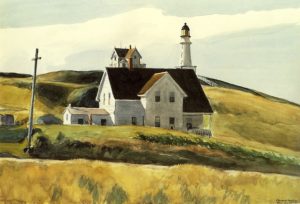
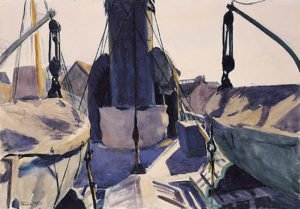
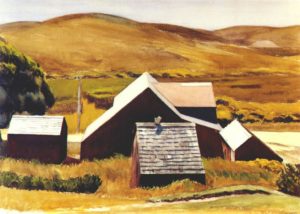
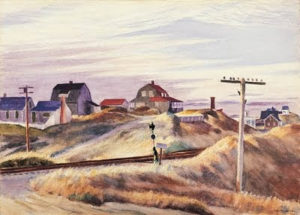

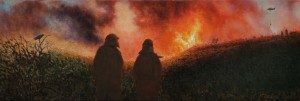



17 Comments
Thank you for displaying Edward Hopper’s work here – I’ve never heard of him. His work is stunning!
Ralph, I read your bio because of your statement of never having heard of Hopper. You’re so well educated and yet had no exposure to one of America’s premier artists. Doesn’t it make you wonder who else you’re missing out on? Sure had me wondering about how this happened! Glad it got corrected but I might suggest getting out into museums a bit more, or expanding the periods of art you’re studying. Cheers, Morgan
Edward Hopper ‘s work amazing. He lived on my beloved Cape Cod, artists dream…. Look up his other works !!!
I’ve never been much impressed by Hopper – until the images in this letter! They are lovely. His more popular work leaves me cold.
Firstly, I believe oil painting is the most forgiving medium with endless opportunities to change, wipe out, scrape off. Paint out or over.
It is curious you chose Hopper to illustrate this letter. Undoubtedly a great painter and master watercolors but far from heuristic, it looks like.
I agree – because acrylic drives me mad as it dries either lighter or darker than when wet – a nightmare unless one sets up a very careful tonal system.
Acrylic requires an entirely different approach. I love the layering possibilities. Alcohol and a Qtip removes darker areas where I wish to adjust values, way better than adding a layer of paint or gesso on top. I think anyone using watercolour is heuristic. Take a stab and go with the flow. And I agree, oils are very flexible. I just love painting….
Robert described my method perfectly. It’s all about discovery.
Sara, the link you have to my website isn’t working. It should be: https://warrencriswell.com/
Fascinating, thank you Sara. I seem to be at a point in my (watercolour) practice where the results of my paintings are cool colours, missing the warm. My teacher, understandably keeps pointing this out, and he’s right. However, I’m liking the freshness of them. My latest on Instagram is a good example. That is a photo of the painting before (in my opinion) ruining it by adding warm colour. I like the results because they’re true to me, the artist, at that time, rather than engineered. What I take from this letter is ‘whim, don’t correct, intuition’. Lovely! I’ll keep doing it, until my whim takes me in a different direction.
I have saved this article on my phone for inspiration. Very practical advice with aspirational depictions of light and values by Hopper, thank you!
P.S. it reminds me of machine learning and fuzzy logic, where simple machines get a “close enough” result and refine each time,
As a watercolor painter, I never thought about the process as being a series of guesses. Maybe that’s why I paint a real mess, a dog, on occasion.
I am so pleased you are continuing these most creative, informative and educational painting/history emails.
As a mixed media painter, watercolor was my intro into a fulfilling art habit I’ve developed, now working also in acrylic and oil. It took me years to master an understanding of how watercolors and water work together, and when I began to paint wet in wet more spontaneously and abstractly, I discovered what an exciting medium it is because of the beautiful and unexpected surprises that can happen when you “go with the flow”. Watercolor will always be my first love of a painting medium. From this happy discovery, my thoughts echo Karen’s in that I believe watercolor might be considered the most heuristic medium, because the best results often come from spontaneity and risk (after painting many, many throw aways). I also really enjoy working in other media, for all their varied and distinct advantages. Thanks so much for the wonderful letter and for including the images of Hopper’s sublime works.
That’s a great overview of heuristics! It’s funny how often we rely on these mental shortcuts without even realizing it. The “trial and error” aspect especially resonates – it reminds me of endlessly trying to jump over cacti in the Dinosaur Game to improve my high score. Sometimes, a quick and dirty solution is all you need, even if it’s not perfect. It’s all about balancing accuracy with efficiency, right?
Heuristic painting is the best to deal with to get the desired solutions that we are required to resolve our problems. When we tile roof cleaning we can see how it works and provide great solutions that are required.
It is an amazing overview of the Heuristic painting to guide people about the Heuristic and its surroundings. When I was in need to know about the Rockwall Attic Insulation services I saw the best reviews at such places where people like to share their experiences. People can visit the site to know about their quality.